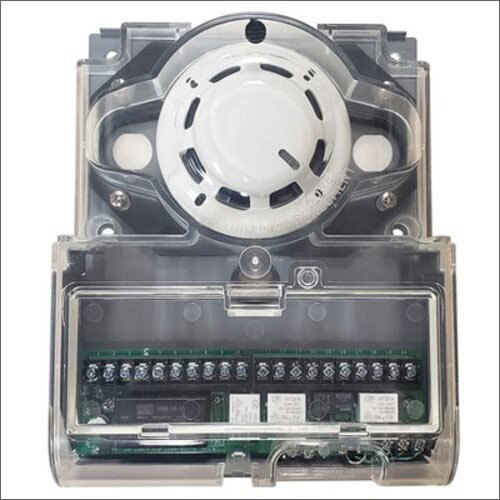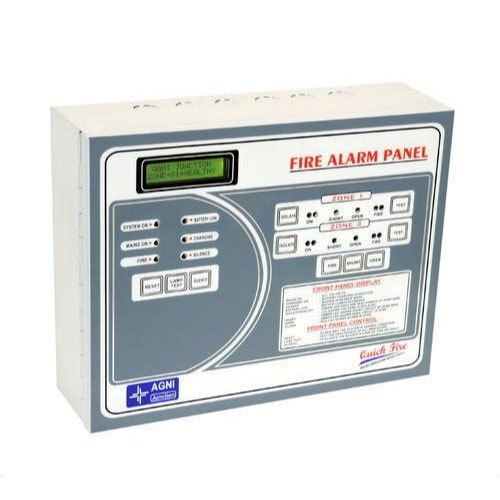- Home Page
- Company Profile
-
Our Products
- Fire Suppression Systems
- Hfc 227ea Auto Fire Extinguishing System
- Hfc227ea Total Flooding System
- Clean Agent Cylinderless System for Car
- Wind Turbine Fire Detection and Suppression System
- Vehicle Fire Protection System
- Fire Extinguishing System For Electrical Cabinets
- Aerosol Based Fire Suppression System
- Cylinder Less Tube Based Fire Detection Suppression Systems
- Hfc227ea Clean Agent Fire Extinguishers
- Carbon Steel Fm 200 Fire Suppression System
- Direct Tube Based Fire Suppression System
- Novac 1230 Fire Flooding Systems
- Clean Agent Fire Suppression System
- Heat Sensing Tube
- Clean Agent Cylinderless System
- Modular Clean Agent HFC236fa Extinguishers
- FK 5112 Suppression System
- Hfc 227ea Based Fire Suppression System
- Novec 1230 Flooding System
- Aerosol Fire Suppression System
- Dual Agent Retardant fire Suppression System
- Fire Suppression For Power Generators
- Car Fire Protection System
- Novec 1230 Clean Agent Suppression Systems
- High Voltage Transformer Fire Suppression System
- FM200 Fire Suppression System
- Mild Steel Novec 1230 Fire Suppression System
- Novec 1230 Fire Suppression System
- Clean Agent Fire Suppression System for Wind Turbine
- Bus Engine Fire Protection System
- Fire Trace System
- SEVO Tubing Suppression System
- Fire Detection And Fire Suppression System
- Heavy Vehicle Fire Suppression Systems
- Fire Sprinkler System Installation Service
- Vehicle Fire Suppression System
- Pre Engineered Fire Suppression System
- Server Rack Fire Suppression System
- Fire Suppression System (Capacitor Panel)
- Mild Steel Fire Suppression Systems
- Electrical Panel Detection Suppression System
- Fire Detection Tube Suppression System
- Fire Extinguishing System For Electrical Panel
- Electrical Panel Gas Suppression System
- Novec 1230 Fire Suppression System for Industrial
- Fm200 Gas Based Fire Suppression Systems
- FM200 Gas Based Fire Suppression Systems For Wind Turbines
- Tube Based Fire Suppression System
- Novec 1230 Fire Gas Suppression System For Electrical Panel
- Novec 1230 Fire Extinguishing System
- Novec 1230 Gas Suppression System For Wind Turbine Fire Suppression System
- Nitrogen Injection Transformer Fire Protection System
- Electrical Panel Fire Suppression System
- Dual Agent Retardant Fire Suppression System
- Diffusible FE36 Fire Suppression System
- Hazardous Cabinets Fire Suppression System
- Chemical Fire Suppression Systems
- Nitrogen NITFP System
- Automatic Fire Detection and Suppression System
- Novec 1230 Fire Suppression Systems
- Fire Suppression For Wind Turbines
- Bladder Tank Proportioning System
- Electrical Panel Fire Suppression
- Fk 5112 Fire Suppression System
- Fire Extinguishing Systems
- Fire Alarms And Detection Systems
- White Addressable Duct Detector
- UV IR Flame Detector
- Agni Sounder Hooter
- Addressable Fire Alarm System
- Fire Alarm System Amc Service
- Conventional Fire Alarm System
- Digital Addressable Fire Alarm System
- Aspirating Systems Smoke Detectors
- Agni Addressable Security Fire Alarm
- Fire Detection And Fire Alarm System
- Uv Ir Flame Detector System
- Ravel 2 zone Conventional Fire Alarm System
- Addressable Photoelectric Duct Detector
- Fire Alarm Sounder
- Fire Response Indicator
- Vesda Aspirating Smoke Detection System
- 4 Zone Addressable Fire Alarm System
- Ravel 4 zone Conventional Fire Alarm System
- Fire Detection Fire Alarm System
- Co2 Flooding/Suppression System
- Co2 Based Fire Suppression Systems
- CO2 Suppression System
- CO2 Fire Flooding
- Automatic Pipeline Co2 Fire Suppression System
- Co2 Fire Flooding System
- Co2 Cylinder Fire Suppression System
- In Direct CO2 Flooding System
- High Pressure Co2 Automatic Fire Extinguishing System
- Automatic Co2 Flooding System
- Automatic CO2 Flooding System
- Gas Based Co2 Flooding System
- Co2 Gas Fire Suppression System
- ELECTRICAL PANEL CO2 FLOODING SYSTEM
- Automatic Pipeline CO2 Fire Suppression System
- Co2 Fire Suppression System
- Passive Fire Protection
- Fire Extinguishers
- Twin Trolley Type Fire Extinguisher
- Co2 Fire Extinguisher Refilling Service
- Clean Agent Type Fire Extinguisher
- Amc For Fire Fighting System
- Co2 type fire Extinguisher
- Mild Steel Wet Chemical Fire Extinguisher
- Carbon Steel Abc Fire Extinguisher
- Automatic Ceiling Mounted D Type Fire Extinguisher
- Water Spray Sprinkler Systems
- Kanex Fire Extinguishers
- Fe36 Clean Agent Fire Extinguisher
- Modular Dry Chemical Powder Extinguishers
- Kitchen Fire Suppression System
- Kitchen Fire Suppression System
- Mild Steel Kitchen Fire Suppression
- Kitchen Hood Fire Suppression System
- Automatic Kitchen Fire Extinguishing System
- Kitchen Fire Extinguisher
- kitchen Nozzle Fire Suppression System
- Restaurant Kitchen Fire Suppression System
- Fire Suppression System For Commercial Kitchen
- Commercial Kitchen Fire Suppression System
- HW & MV Fire Protection System
- Commercial Gas Leak Detector
- Medium Velocity Water Spray System (MVWS)
- Transformer Fire Protection System
- Transformer Fire Prevention System
- Transformer Fire Suppression Systems
- Conveyor belt system fire protection system
- Nitrogen Injection Fire Protection System For Transformer
- High Velocity Water Spray System (HVWS)
- Fire Suppression Accessories
- Fire Hydrant System
- Clean Agent Gas Refilling
- Fire Fighting Foams
- Smoke Detector
- Ravel Beam Smoke Detector
- Addressable Photoelectric Smoke Detector
- Addressable Smoke Detector
- Fire Alarm Addressable Smoke Detector
- Battery Addressable Smoke Detector
- Polycarbonate Smoke Detector
- Agni Smoke Detector
- Conventional Optical Smoke Detectors
- Addressable Duct Smoke Detector
- Agni Wireless Smoke Detector
- White Polycarbonate Smoke Detector
- Manual Call Point
- Fire Retardant Fabric
- Fire Alarm Control Panel
- Heat Detector
- Beam Detectors
- Fire Door
- HW&MV Fire Protection
- Fire Cable Coating
- Fire Cable
- Public Address Systems
- Hydraulic Hose
- Fire Suppression Systems
- Contact Us

Addressable Photoelectric Duct Detector
8500 INR/Piece
Product Details:
X
Addressable Photoelectric Duct Detector Price and Quantity
- 8500 INR/Piece
- 8000.00 - 8500.00 INR/Piece
- 200 Piece
Addressable Photoelectric Duct Detector Trade Information
- Cheque
- Asia
- All India
Product Description
An addressable photoelectric duct detector is a specialized type of fire detection device used in commercial and industrial HVAC (Heating, Ventilation, and Air Conditioning) systems. These detectors are designed to detect smoke or other particles in the air within HVAC ductwork, which can be a critical part of fire safety and early warning systems in large buildings.
Here's a breakdown of what an addressable photoelectric duct detector is and how it works:
1. Photoelectric Detection: The "photoelectric" part of the name refers to the method of smoke detection. Photoelectric detectors work by using a light source and a sensor. A light beam is emitted into the detection chamber, and a sensor on the other side of the chamber detects the amount of light that reaches it. When smoke or other particles enter the chamber, they scatter the light, causing a reduction in the amount of light reaching the sensor. This change in light level triggers the detector to send an alarm signal.
2. Duct-Mounted: These detectors are specifically designed to be installed inside HVAC ducts. They are placed in the airflow path so that they can sample the air passing through the ductwork for the presence of smoke or particles.
3. Addressable: Addressable detectors are part of a larger fire alarm or building automation system. Each addressable device has a unique identifier (address), allowing the control panel to pinpoint the location of the activated detector. This is particularly useful in large buildings, as it allows for a quicker response during emergencies.
4. Integration: Addressable photoelectric duct detectors are integrated into the building's fire alarm system. When smoke or particles are detected, the detector sends a signal to the central control panel. The control panel can then activate alarms, notify building occupants, and alert the fire department if necessary.
5. Maintenance: Regular maintenance and testing are crucial for these detectors to ensure they remain operational. Dust and dirt buildup in ducts can affect their sensitivity, so periodic cleaning and inspection are necessary.
6. False Alarm Reduction: Photoelectric detectors are known for their reliability and lower susceptibility to false alarms compared to ionization detectors. They are better at distinguishing between actual smoke and common particles like dust or pollen.
7. Code Compliance: Addressable photoelectric duct detectors are typically installed in accordance with local fire safety codes and regulations. Building owners and facility managers must ensure compliance with these codes.
FAQ:
Q. What is an addressable photoelectric duct detector?
Ans: An addressable photoelectric duct detector is a specialized fire detection device designed to detect smoke or particles within HVAC ductwork. It is part of a larger fire alarm or building automation system.
Q. How does an addressable photoelectric duct detector work?
Ans: It employs photoelectric technology, using a light source and a sensor. When smoke or particles enter the detection chamber within the duct, they scatter the light, triggering the detector to send an alarm signal to a central control panel.
Q. Why are they used in HVAC systems?
Ans: Addressable photoelectric duct detectors are used to enhance fire safety in large buildings by detecting early signs of fire within HVAC ducts, where smoke and flames can quickly spread.
Q. What makes them "addressable"?
Ans: They are addressable because each detector has a unique identifier (address) within the system. This allows the control panel to identify the exact location of the activated detector, aiding emergency response.
Q. What is the advantage of photoelectric detection over other methods?
Ans: Photoelectric detection is known for its reliability and lower susceptibility to false alarms compared to ionization detection. It is better at distinguishing between actual smoke and common airborne particles.
Q. How often should addressable photoelectric duct detectors be inspected and maintained?
Ans: Regular maintenance and testing are essential. Depending on local regulations and manufacturer recommendations, this can range from monthly to annually. Dust and dirt accumulation can affect their sensitivity.
Q. What types of buildings typically use these detectors?
Ans: They are commonly found in commercial and industrial buildings, such as warehouses, factories, shopping centers, office complexes, hospitals, and high-rise buildings.
Q. Are there any regulations or codes governing the installation of these detectors?
Ans: Yes, installation should comply with local fire safety codes and regulations. Building owners and facility managers should ensure they are in compliance.
Q. Can addressable photoelectric duct detectors be integrated with other building systems?
Ans: Yes, they can often be integrated with HVAC controls, building management systems, and fire alarm systems for a comprehensive approach to building safety and automation.
Q. Do these detectors require any special training to install and maintain?
Ans: Proper installation and maintenance typically require training or certification from the manufacturer or an authorized service provider to ensure they function correctly and meet safety standards.
Q. What are some common troubleshooting steps if a duct detector is not functioning correctly?
Ans: Common troubleshooting steps include checking for obstructions, cleaning the detector, verifying power and communication connections, and consulting the user manual or manufacturer's guidelines.
Q. Can these detectors be part of a larger fire suppression system?
Ans: While they detect the presence of smoke or particles, they are not typically part of fire suppression systems. Fire suppression systems, such as sprinklers or gas-based systems, are designed to extinguish fires.
Tell us about your requirement

Price:
Quantity
Select Unit
- 50
- 100
- 200
- 250
- 500
- 1000+
Additional detail
Mobile number
Email
Other Products in 'Fire Alarms And Detection Systems' category
" We mainly want inquiries from Gujarat, Rajasthan, Madhya Pradesh, Maharashtra, Goa. "






 Call Me Free
Call Me Free
 English
English Spanish
Spanish French
French German
German Italian
Italian Chinese (Simplified)
Chinese (Simplified) Japanese
Japanese Korean
Korean Arabic
Arabic Portuguese
Portuguese